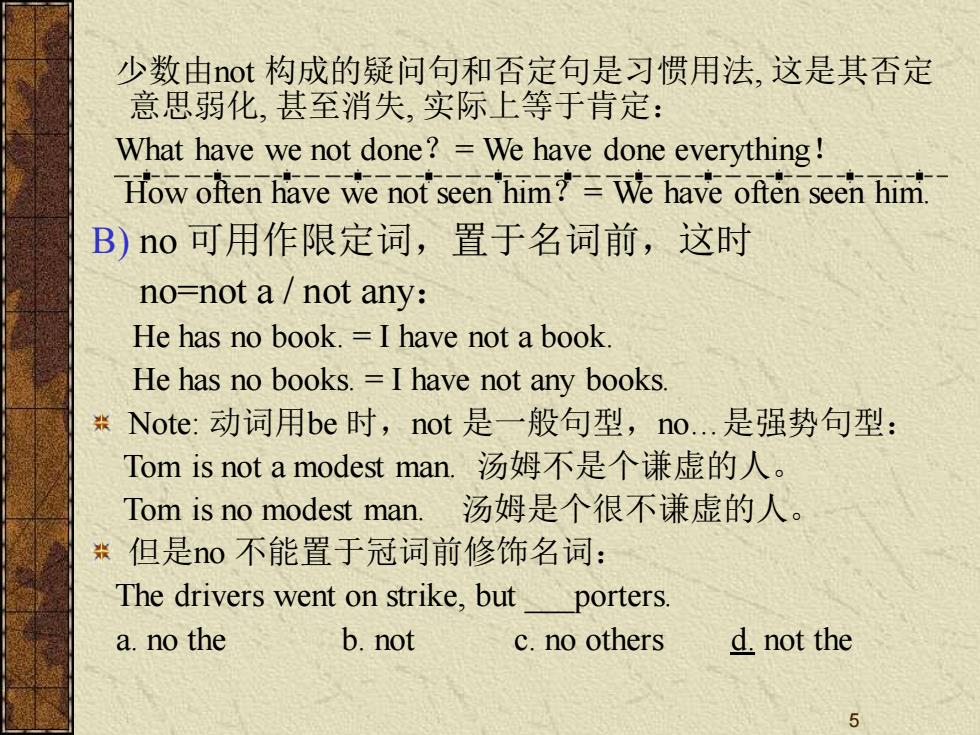正在加载图片...

少数由not构成的疑问句和否定句是习惯用法,这是其否定 意思弱化,甚至消失,实际上等于肯定: What have we not done?=We have done everything! How often have we not seen'him?=We have often seen him. B)no可用作限定词,置于名词前,这时 no=not a not any: He has no book.=I have not a book. He has no books.=I have not any books. Note:动词用be时,not是一般句型,no.是强势句型: Tom is not a modest man.汤姆不是个谦虚的人。 Tom is no modest man.汤姆是个很不谦虚的人。 但是no不能置于冠词前修饰名词: The drivers went on strike,but porters. a.no the b.not c.no others d.not the 5 5 少数由not 构成的疑问句和否定句是习惯用法, 这是其否定 意思弱化, 甚至消失, 实际上等于肯定: What have we not done?= We have done everything! How often have we not seen him?= We have often seen him. B) no 可用作限定词,置于名词前,这时 no=not a / not any: He has no book. = I have not a book. He has no books. = I have not any books. Note: 动词用be 时,not 是一般句型,no…是强势句型: Tom is not a modest man. 汤姆不是个谦虚的人。 Tom is no modest man. 汤姆是个很不谦虚的人。 但是no 不能置于冠词前修饰名词: The drivers went on strike, but ___porters. a. no the b. not c. no others d. not the